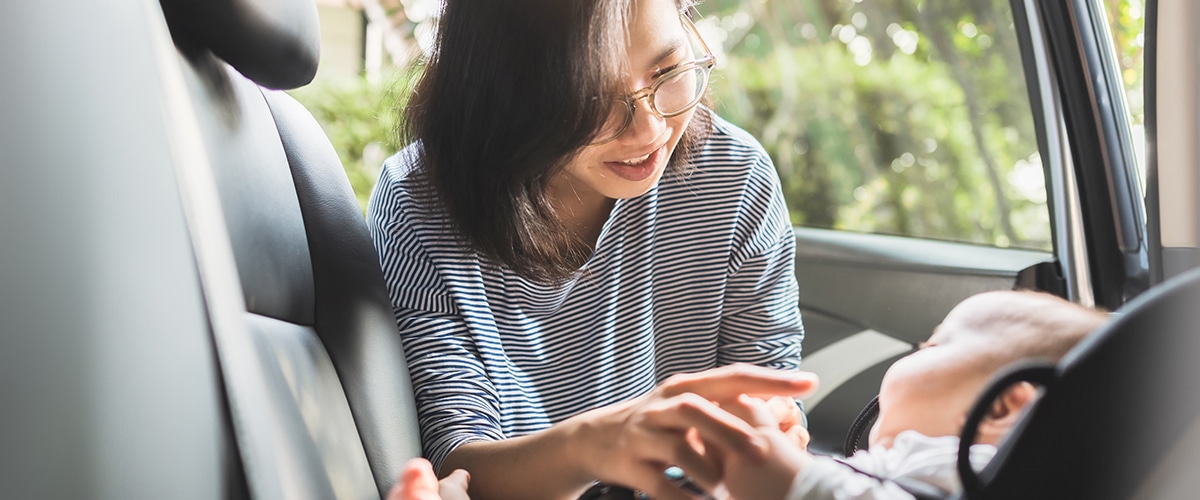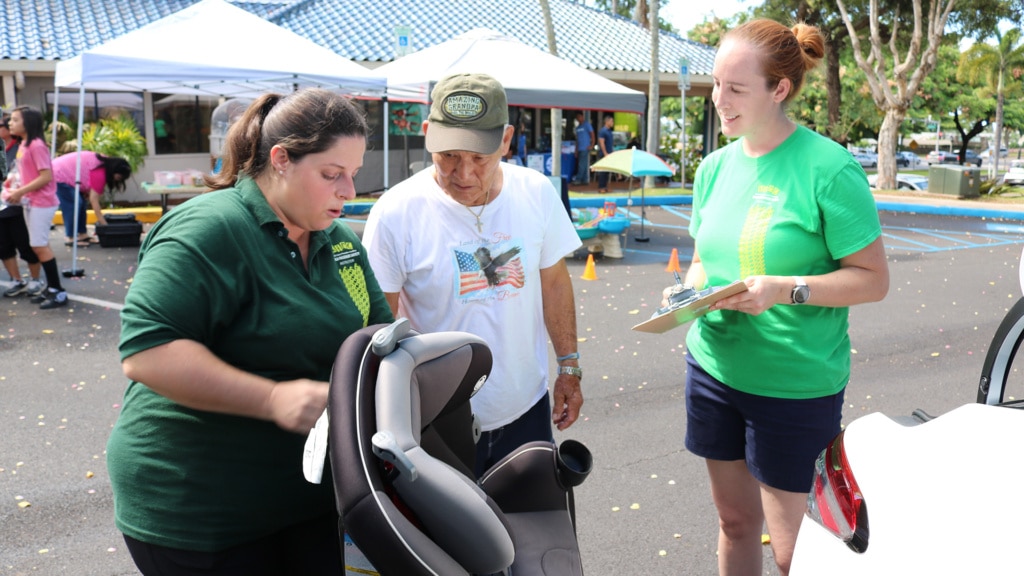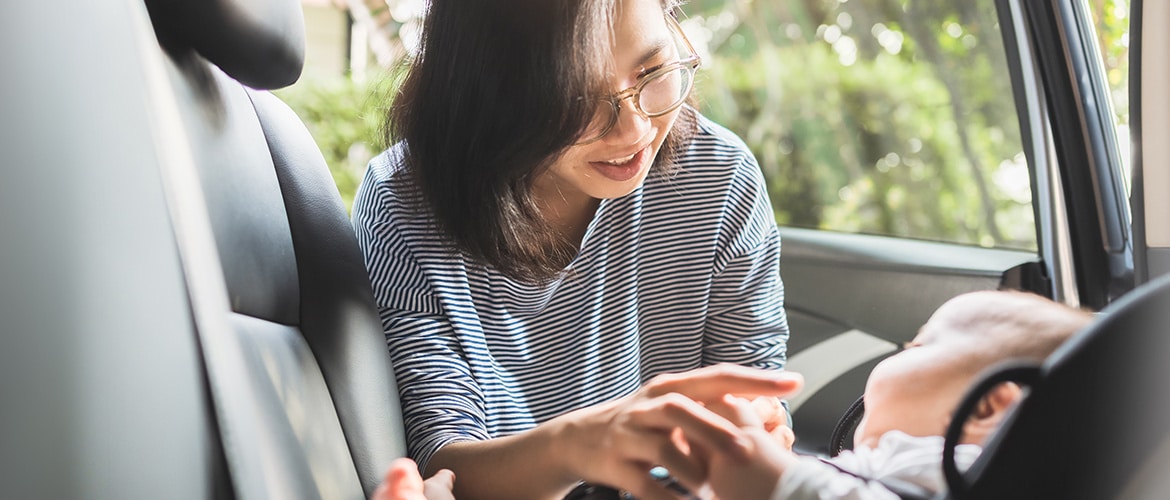National Child Passenger Safety Week

Car crashes are a leading cause of death for children under the age of 13, but often these related deaths and injuries could be prevented by proper use and installation of car seats, boosters and seat belts. According to the National Highway Traffic and Safety Administration (NHSTA), nearly half of all car seats are used incorrectly.
Sep. 18 to 24 is National Child Passenger Safety Week, which makes it an ideal time to have your child’s car or booster seat inspected to be sure it’s properly secured in your vehicle.
We all want to keep our kids safe in the car, but it can be tricky keeping up with the latest recommendations, especially as your child grows and their needs change. Here are 6 tips to keep keiki in your life as safe as possible when riding in the car:
1. Choose the right car seat for your child’s size and age
Be sure your child’s car seat is appropriate for their age, height, and weight. Not sure if you have the right car seat? Visit NHTSA.gov/TheRightSeat to compare car seats and get helpful installation instructions. Also be sure that the car seat properly fits your vehicle.
2. Back seat only for kids 13 and younger
Regardless of your child’s height or weight, the NHSTA recommends that children under 13 should ALWAYS sit in the back seat, even for the shortest of trips. While care safety features like air bags can save an adult’s like, they can be dangerous for kids. Most car crashes impact the front of the vehicle, so keeping children in the back seat can help protect them from injury.

3. Don’t move seats too soon
The best protection for a child in a car is a car seat that’s suitable for their age and size. Statistics from the NHSTA show that nearly 1 in 10 children between 1 and 3 years of age were moved to booster seats too early. In addition, roughly 1 in 5 children aged 4 to 7 were prematurely moved to just using a seat belt. Booster seats help a child’s seat belt fit appropriately to cross the center of their chest and not touch their neck.
4. Understand Hawaii’s updated car seat laws
Hawaii’s State Legislature passed changes to the child passenger laws during the 2022 session. Children under the age of two-years-old must be in a rear-facing car seat. Keiki between two to four years of age may be in a forward-facing seat. The law now requires children between four to 10 years-old to be properly restrained in a booster seat, raising the upper age limit by two years.
5. Get your car seat installation inspected for free on National Car Seat Check Saturday on Sept. 24
Whether you’ve just installed a new car seat or just want a “checkup” for a seat your child has been using for a while, you can get help on Saturday, Sept. 24 at National Car Seat Check Saturday at Waipio Shopping Center. Certified technicians will inspect your car seat free of charge, show you how to correctly install it, and make sure your child is properly secured.

6. Set a good example for your keiki
Last, but not least, set a good example for your child by putting on your own seat belt while driving. Make sure that all of your passengers follow your instructions to assure everyone’s safety.

